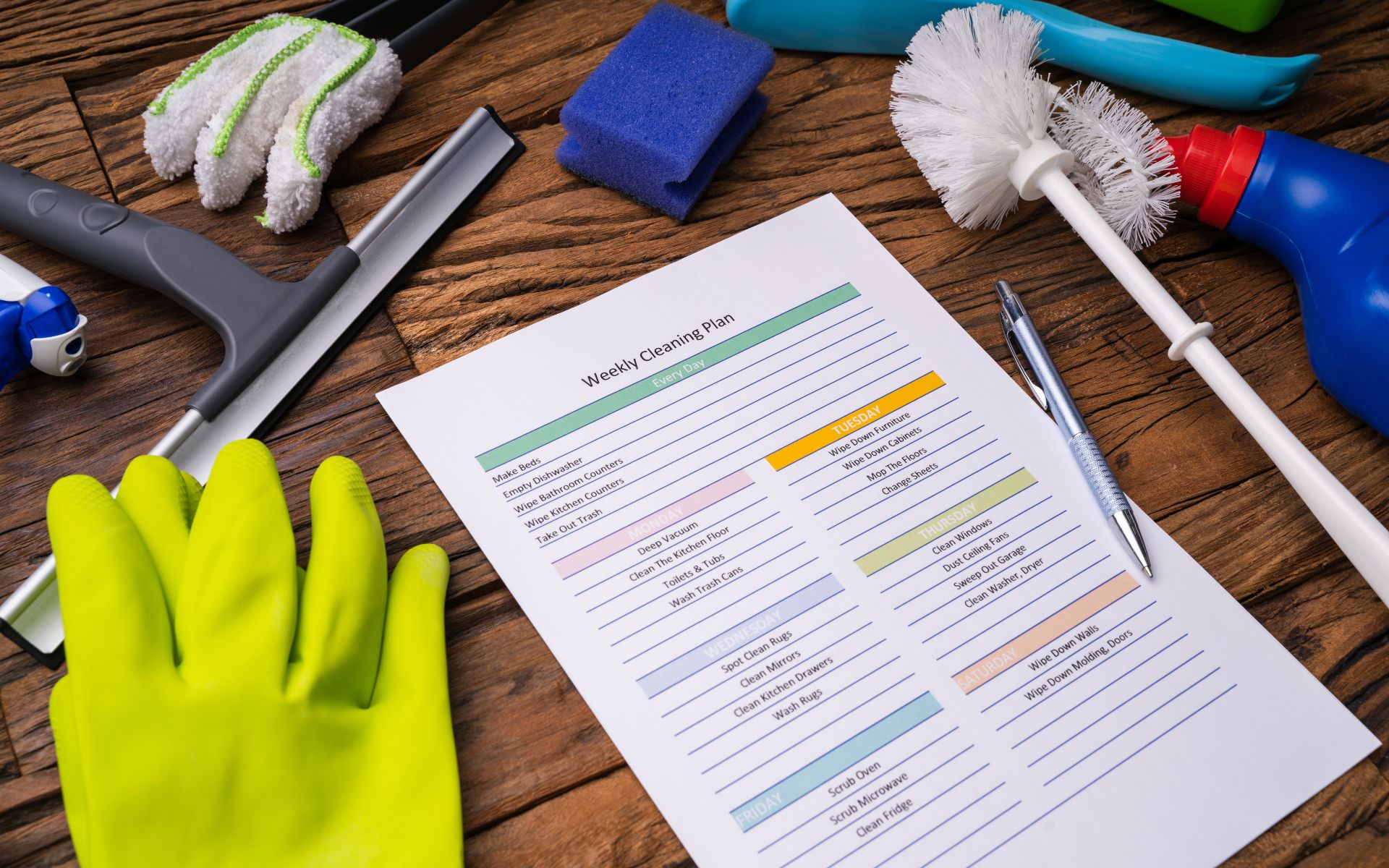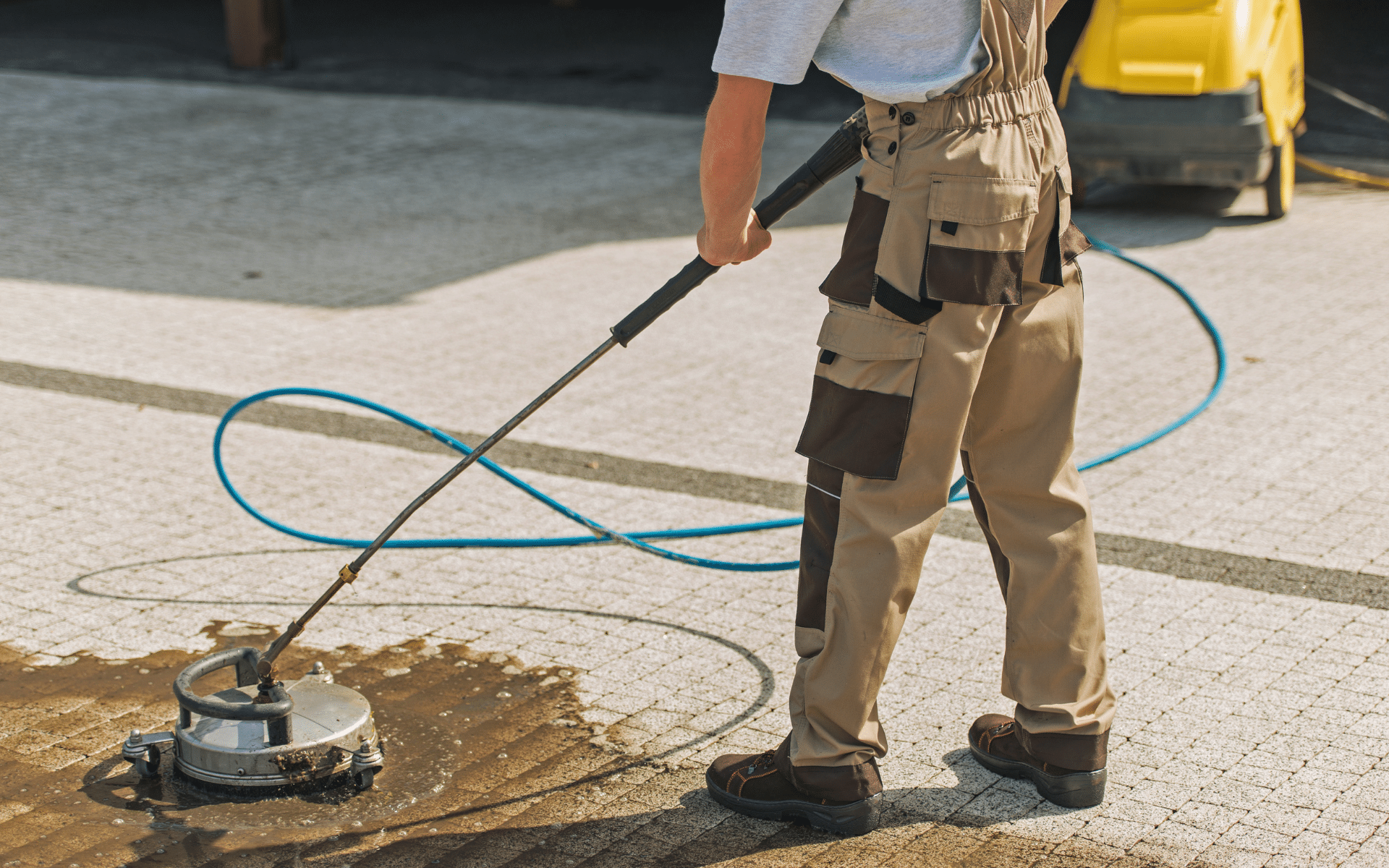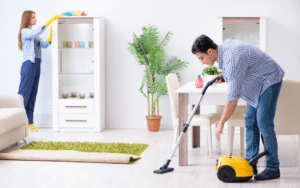Keeping a tidy home is important to many of us. But with busy schedules, it can be tough to stay on top of all the cleaning. That’s why having a plan in place can make all the difference. The key is customizing that plan to fit your unique needs and preferences.
In this article, we’ll explore how you can tailor cleaning routines to match your lifestyle. Whether you want to focus on quick daily tidy-ups or deep weekly cleans, there are ways to streamline the process. We’ll also look at tools and techniques to make chores faster and easier. Things like using the right products and equipment for the job can make your cleaning efforts more effective.
The goal is to take the stress out of maintaining a clean home. Well, you can always hire a cleaning service, but if you don’t have enough budget for it, creating a cleaning plan would be ideal. With some thoughtful planning and customization, you can establish cleaning habits that work with your routine – not against it. A customized approach allows you to focus on the tasks that matter most in the spaces you use the most. So read on for tips on designing a personalized cleaning plan that suits your home and schedule.
Benefits of a Customized Cleaning Plan
Why should you consider creating a customized cleaning plan? Here are some excellent reasons:
Achieve a Spotless House
A tailored cleaning routine allows you to thoroughly clean every area of your home regularly. By addressing problem zones and cleaning habits unique to your household, you can keep all rooms sparkling clean.
Enjoy Increased Efficiency
With a customized schedule, you can optimize when and how you clean different areas. This prevents wasting time on low-priority tasks or redundantly cleaning the same spaces. The result is completing cleaning faster without sacrificing quality.
Reduce Cleaning Workload
Carefully planning cleaning tasks means you won’t take on more than you need to. Trimming the clutter and simplifying routines lightens the workload so cleaning feels manageable, not overwhelming.
Establish Cleaning Priorities
A custom plan lets you focus on the cleaning jobs that matter in your home. You can allocate more time for high-traffic and messy areas and go lighter on spots that stay tidy.
Allow Flexibility As Needs Change
As circumstances in your home and life adjust, so can your cleaning routine. A tailored approach makes it easy to shift plans to match changing schedules, family sizes, pets, and more.
According to home management experts at Good Housekeeping, customizing your house cleaning checklist to match your home’s layout helps streamline chores and ensures every surface gets attention.
Creating a Comprehensive Customized Cleaning Routine
Designing your unique cleaning plan takes some time and planning. This would work well with apartment cleaning as well. So, follow this process for building a comprehensive schedule:
Step 1: Break Down Floor Area by Room
Start by measuring the square footage of your home and recording the floor area per room. This allows you to gauge appropriate cleaning times based on the size of the spaces. Factor in elements like high ceilings that increase workloads.
Step 2: List Typical Cleaning Tasks
Brainstorm all the common cleaning duties conducted in a home, such as:
- Sweeping – Regularly sweeping floors removes surface-level dirt, dust, and debris. Focus on high-traffic areas like entryways, kitchens, and hallways that accumulate more grit. Use a broom or microfiber mop for quick daily sweeps.
- Mopping – For deeper floor cleaning, mopping tackles stuck-on messes and sanitizes floors. Target kitchens, bathrooms, mudrooms, and other rooms prone to spills or grime buildup. Mopping once or twice per week usually suffices.
- Vacuuming – Vacuuming removes embedded dirt, allergens, and pet hair from carpets and rugs. Prioritize rooms like living rooms, family rooms, bedrooms, and rec areas used most frequently. Daily vacuuming may be needed for homes with lots of foot traffic and pets.
- Dusting – Regular dusting keeps surfaces free of dust buildup and lint. Focus on shelves, ceiling fans, lampshades, blinds, and furniture in used rooms. Dusting a few times a week keeps dust bunnies at bay.
- Cleaning Mirrors/Glass – Smudged mirrors and glass surfaces should be cleaned 1-2 times per week. Use glass cleaner for mirrors, shower doors, windows, and appliances for a sparkling streak-free shine.
- Scrubbing Sinks – Bathroom and kitchen sinks need weekly scrubbing to remove stains and grime. Use a multipurpose cleaner or disinfecting scrub to make fixtures shine.
- Cleaning Showers/Tubs – Give showers, tubs, and tile walls a thorough scrubbing once a week to control soap scum and mildew. Use a tile/grout brush and bathroom cleaner for best results.
- Sanitizing Counters – Kitchen and bathroom counters need frequent sanitizing – ideally daily – to kill germs. Disinfect with a multipurpose cleaner or sanitizing wipe.
- Changing Linens – Bedding and towels should be washed weekly to keep them fresh and allergen-free. Rotate multiple sets to always have clean linens ready.
The American Cleaning Institute states that cleaning effectiveness relies on using the proper methods and products for each surface material, whether tile, sealed hardwood, or laminate.
Step 3: Create a Custom Chore List
Now begin assembling cleaning tasks tailored to each room in your home. The duties will vary based on flooring, fixtures, furnishings, and other room elements. For example, stone floors require different methods than hardwood or carpet. Include seasonal duties like clearing gutters or yard work on your list as well.
Step 4: Establish Frequency for Tasks
Determine how often each chore needs to be completed – daily, twice weekly, weekly, monthly, or seasonally. Break down tasks into reasonable time commitments for each cleaning session. Sweeping high-traffic areas daily might be reasonable, while carpets only need periodic deeper cleaning.
Here’s an example customized chore list:
- Daily Chores
- Sweep kitchen floor – Use a broom or dry mop to collect crumbs, dirt, and debris from tile, wood, or vinyl kitchen floors to prevent accumulation. Sweep under movable appliances and furniture as well.
- Wash dishes – Washing dishes by hand or loading a clean dishwasher daily keeps odors and ants away. Air dry all hand-washed dishware thoroughly before putting it away.
- Take out trash – Empty all waste bins around the house into larger kitchen trash bags for curbside collection. Replace used bags in waste bins with fresh ones. Take recycling and compost out as well, if applicable.
- Weekly Cleaning
- Mop kitchen floor – Use your preferred green mopping solution and mop to sanitize hard surface kitchen floors weekly. Let the floors air dry completely before walking on them after mopping.
- Clean bathroom sinks – Scrub bathroom sinks weekly to prevent stain and grime buildup. Disinfect sink basins using antibacterial cleaner or DIY vinegar solutions after scrubbing.
- Change bed sheets – Remove and wash bedding linens like sheets, pillowcases, and covers weekly to eliminate body oils, germs, and skin cells that accumulate while sleeping.
- Monthly Cleaning Tasks
- Dust ceiling fans – Use a microfiber duster with an extendable handle to capture dust that gathers on ceiling fan blades monthly. This prevents it from recirculating through the air.
- Clean fridge – Thoroughly wipe down shelves, drawers, and walls inside the refrigerator every month. Check expiration dates and discard old food.
- Vacuum couch – Use the soft brush attachment of your vacuum once a month to keep the couch and chair upholstery clean. This prevents dust and dirt buildup that can wear down fabrics.
Step 5: Designate Cleaning Days/Times
To make your cleaning routine flow smoothly, assign set days and times for household work. Periodically conducting cleaning prevents the buildup of dirt and clutter.
Many people designate Mondays or Fridays as weekly cleaning days. Daily chores often occur in the morning or evening hours after meals and before bed. Block times that best fit your schedule.
Be sure to consider family activities and other commitments as you strategically plan cleaning sessions. Having adequate time to complete tasks thoroughly is key. Rushed or double-booked times lead to poor execution or cutting corners.
Step 6: Build a Cohesive Schedule
Compile duties, frequencies, and times into an integrated master schedule for home cleaning. This becomes your customized blueprint for maintaining a spotless home. Revise and update your plan as family, schedules, and cleaning needs evolve.
Tips for Effective Daily and Weekly Cleaning Sessions
To maximize results from your personalized cleaning system, utilize these handy house cleaning tips:
Begin with a Weekly Cleaning Day
Designate one day when you can commit ample time to general housekeeping – at least 2-3 hours. Complete more time-intensive tasks first. Then move to quicker jobs as energy lags later in your cleaning day.
Schedule weekly sessions on set days to establish a consistent routine. Enlist other household members to help speed the process. Playing lively music can also boost energy and efficiency.
Tackle Daily Chores Each Evening
Use the last 30 minutes before bed to swiftly complete small daily cleaning jobs. An evening routine helps you unwind while ensuring messes don’t accumulate overnight.
Set a timer to keep your focus. Put on pajamas first so you can head straight to sleep when done without distraction.
Create Cleaning Stations
Place cleaning tools like dusters or mops in stations around the home for convenient access. Having supplies ready to grab saves steps and makes quick cleanups simple. Install stations in hot spots like the kitchen, playroom, or bathrooms.
Storing items together also minimizes search time. Designate baskets or caddies to safely transport cleaners and gear from one room to the next as needed.
When to Hire Professional Cleaners
Do you need more extensive help than your customized cleaning plan provides? Professional cleaners offer valuable specialized services.
Deep Cleans Trouble Areas
Over time, some spaces in your home collect deeper dirt and stains that require heavy-duty cleaning methods. Professionals have commercial-grade equipment plus strong cleaners to tackle issues like:
- Embedded grill grease
- Pet accidents on carpets
- Mold or mildew in bathrooms
- Years of caked-on grime in ovens
- Nicotine residue on walls after smoking
Hiring pros to deep clean periodically saves you time and elbow grease.
Offers Extra Help During Life Changes
Special life events also make professional cleaning a smart option. The last thing you want to worry about when expecting a new baby or during illnesses is scrubbing the house.
After major remodels or repairs, builders leave behind messes pros can quickly clear out. Let the experts handle the work while you tackle more important tasks.
Provides Occasional Peace of Mind
Hectic times of year lead many homeowners to hire cleaners simply for a mental break. The holidays or returning home from vacation become less stressful when you outsource cleaning chores.
Coming home to sparkling spaces lets you fully relax and enjoy valuable family time. Professionals also check for safety issues and preventative maintenance needs while cleaning.
Conclusion
Customizing cleaning plans requires some diligent upfront effort. But once your specialized household schedule is set, maintaining a spotless house becomes much simpler.
Approaching chores systematically – focusing on customized duties, frequencies, and times – leads to sparkling spaces. Your unique home layout and evolving family needs demand tailored cleaning strategies.
Implement the tips above to make your next housekeeping session faster and more effective. Get started creating orders today with a custom cleaning routine made just for your home!










